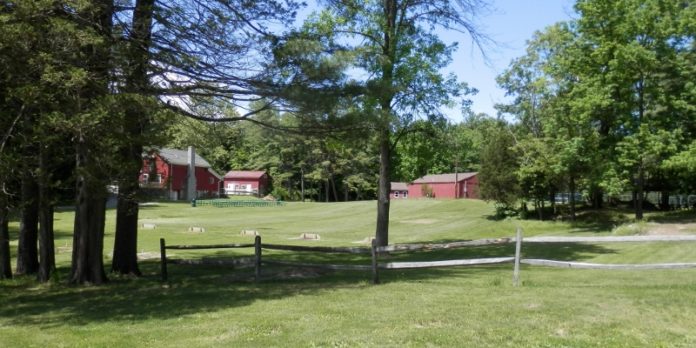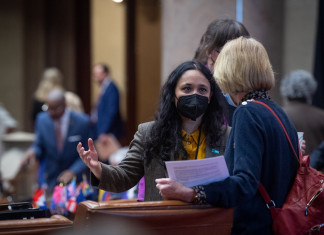
An archaeological dig to unearth a free slave community in Hyde Park a few years ago has turned into a potentially contentious mystery revolving around the excavated artifacts.
The Dutchess County Historical Society, which arranged the dig and the funding for it, is seeking return of the artifacts from the Bard College professor they hired to run the dig.
The Hyde Park Town Board also wants the artifacts back because town officials say they belong to the town.
And the professor at the heart of it all, a pre-eminent archaeologist and the head of Bard’s Archaeology Field School, isn’t talking.
In fact, nobody who was involved, including a prominent local resident, is speaking freely about the Guinea Community project, as it is called. It’s also unclear how many artifacts were actually unearthed at the site near Hackett Hill.
What is known about the project comes mainly from local media reports and Bard course listings at the time: The Guinea Community dated back to the late 1700s and was home to a group of free black slaves who had small farms along a mill stream and worked for “elite” families along the Hudson River. Primus and Elizabeth Martin were the community leaders, and it was their house and yard that apparently were the first excavated, along with several foundations found nearby. Those included a house leased from the Bard family, who once owned the property, to Artemis “Quock” Quakenbush, a free man rumored to have been released from slavery by Quakers.
Prof. Christopher Linder, an archaeologist who was called “Bard’s very own Indiana Jones” in a student review, was hired by the county historical society to lead the dig with funds obtained from the nonprofit McCann Foundation in Poughkeepsie.
The project got underway in the spring of 2000, and the real dig began in the next year or two with high school and Bard college students working on it over the summers, along with community volunteers. It was due to enter its fifth season in the summer of 2007.
So what did they find?
Hyde Park Recreation Director Kathleen Davis told the Observer, “Above-ground archeological inspection revealed remains of cellar holes, a well, two stone quarries, extensive refuse midden [waste mounds related to human and animal occupation] and a scattering of cultural materials, including broken ceramic pipes, ceramic tableware and glassware.”
Betsy Kopstein-Stuts, executive director of the DCHS, said briefly, “There were shards of pottery and bones of animals.” Those, she told the Observer, currently reside at Bard College with Lindner.
Hyde Park Town Supervisor Aileen Rohr, who revisited the issue at an April 7 Town Board workshop, said the county “essentially…did not receive the returnables that they were supposed to from this project, and so they have entered into a disagreement with the professor and have now written a letter to Dr. Lindner and Bard College demanding the return of these artifacts.”
Rohr added that the town also wants the artifacts back because they were found on town property. She told the Observer last week that a letter was sent from the town board “to Bard College asking that the artifacts be turned over to the Dutchess County Historical Society, who will hold them on behalf of our town.”
At the town board meeting, Town Attorney Warren Replansky clarified the situation, “We’re not involved in the dispute and we’re not passing judgment on who is right or wrong. This is something between the Historical Society and the archaeologist who performed the work. We’re not saying that anything was done improper. We’re keeping out of that portion of the battle. The dog we have in this fight is that, when these artifacts are recovered — and I think they are being stored some place — then they become the town’s artifacts.”
Asked about the number of artifacts, Replansky responded, “We don’t know if there are a hundred of them, or boxes, or cases — I think we need to find out exactly what it is.”
Rohr told the Observer that if the artifacts are recovered, the town would store them with the county historical society. And she added that DCHS is looking to continue the project by hiring a new archaeologist.
Despite repeated requests for comment, Lindner told the Observer, “I’ve been advised by my attorney not to speak further.”
According to media reports, Lindner was instrumental in helping with the initial identification of the Hyde Park Mastodon in 1999.







Facebook Comments